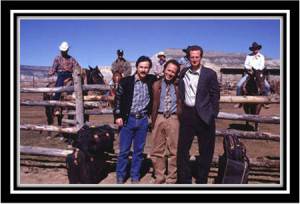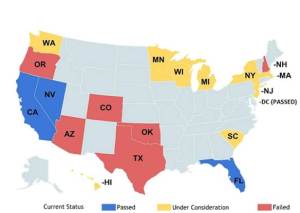If you look at all the hype and writings about Driverless Transportation (much of which you can find links to from this site), you’d believe that Autonomous and Connected Vehicles are a sure-thing.
Yet, back in 2001, Apple CEO Steve Jobs was quoted as saying a new product just being launched would be “as big a deal as the PC”. Regarding the same product, venture capitalist John Doer said the product “would be more important than the internet”(1) and the company would be the fastest company to reach $1 billion in sales(2). That company and product was Segway.
There are many other examples of can’t miss technologies from Super Sonic Passenger Planes to Nuclear Power. Super Sonic Passenger Planes can only be found in museums now and Nuclear Power plants are being shutdown as rapidly as they can.
So what about Driverless Transportation with a fully autonomous vehicle? For the remainder of this blog we’ll look at what we think are the top 5 reasons that Driverless Transportation just can’t miss. In our next blog, we’ll look at what might derail it.
- People Are Terrible Drivers
- 32,000 people in the U.S. and over a million worldwide are killed each year in car accidents
- 95% of this is due to driver error
- In the U.S., it is the #1 killer of people age 4 - 34.
- At this point, the safety features of cars make them about as safe as they are going to get when an accident occurs. The only alternative is to now avoid accidents.
- Since human drivers cause 95% of accidents, the best way to avoid accidents is to replace the driver with something that won’t be drunk, drowsy or distracted.
We may have invented the wheel but that doesn’t mean we should be behind one. The statistical data of deaths occurring on our roadways overwhelming caused by human driver error should be an unequivocal reason to remove people from the driver’s seat. Yes, safety has come a long way but the laws of physics, force and motion are immutable.
- Driving is the Distraction
- People would much rather be doing something else, anything else while they are driving. This could be anything from working to texting, watching a movie or sleeping.
- If you believe BMW and other luxury brands there is a supposed allure of the “perfect driving machine.” In reality most driving is very boring. Most of the time it is the same roads you drove yesterday and last week. If there was a way to do something else then that is what you would do.
Imagine if each time we got in the car we were off on an exciting adventure, seeing new sights with the sun shining and the wind blowing. The truth is, for most people nowadays the vehicle is the vehicle. A few may enjoy the proverbial Sunday drive, but most of us are simply trying to get to the next place. While wanting to be present is a desired aspiration, the bottom line is when we are driving we are usually thinking of a myriad of other things.
- Money, Money, Money
- Over $121 billion is wasted each year by commuters due to time and fuel spent in traffic
- The opportunities for reinventing businesses are just too large for entrepreneurs big and small to pass up.
- Benefits to other business like delivery, long haul trucking and taxi services of removing the driver cost are just too great
- In addition, all that extra time means people can be consuming Google Ads or TV Ads or paying for more Netflix movies.
The potential business opportunities are innumerable. Most of them probably haven’t even been imagined yet. However, we are already seeing companies like Google not just investing in the technology for Driverless transportation but also in potential beneficiaries like Uber.
- Can Start Small
- Many previous attempts at new transportation systems such as PodCars or network based systems requiring the embedding of controls in the road required huge infrastructure changes in order to get started. Because there wasn’t a practical way to start small, it was impossible to get these off the ground
- Autonomous vehicles, on the other hand, don’t require any changes to the current infrastructure.
At first thought in may seem overwhelming to imagine how our current roadway infrastructure would be transformed by an autonomous vehicles system, but the concept is not only within our reach, it’s sitting in our laps. Small scale tests can be run first on campuses or bases. This is already happening or will be soon at places like Stanford University and Fort Leonard Wood in Missouri. Larger scale tests can be run in small communities as is planned for Milton Keynes in the UK. After that particular lanes such as HOT lanes can be used for dedicated autonomous vehicles until they become the norm and not the exception.
- Let Freedom Ring
- For non-drivers such the aged, handicapped, and young, Driverless cars mean freedom and much more cost-effective options.
- As the population continues to age, the number of people in this category will continue to grow.
- Freedom will also be measured as convenience – what harried soccer mom wouldn’t want a way to spend less time in her car delivering her children to their events.
Driverless transportation will open up prospects that will mean different things to different people. But it levels the playing field. Taking the wheel out of our hands allows us to begin to focus on what is truly important in our lives, whoever you are and whatever you do.
What do you think? Will we have Driverless Transportation within the next 10 years? Let us know in the comments below.
If you want to receive automatic notices on new blog entries, Click this button up above on the right:
Follow Driverless Transport
____________________________________________________________________________
(1) Wikipedia entry on Segway
(2) Time Inc: The 10 Biggest Tech Failure of the Last Decade








